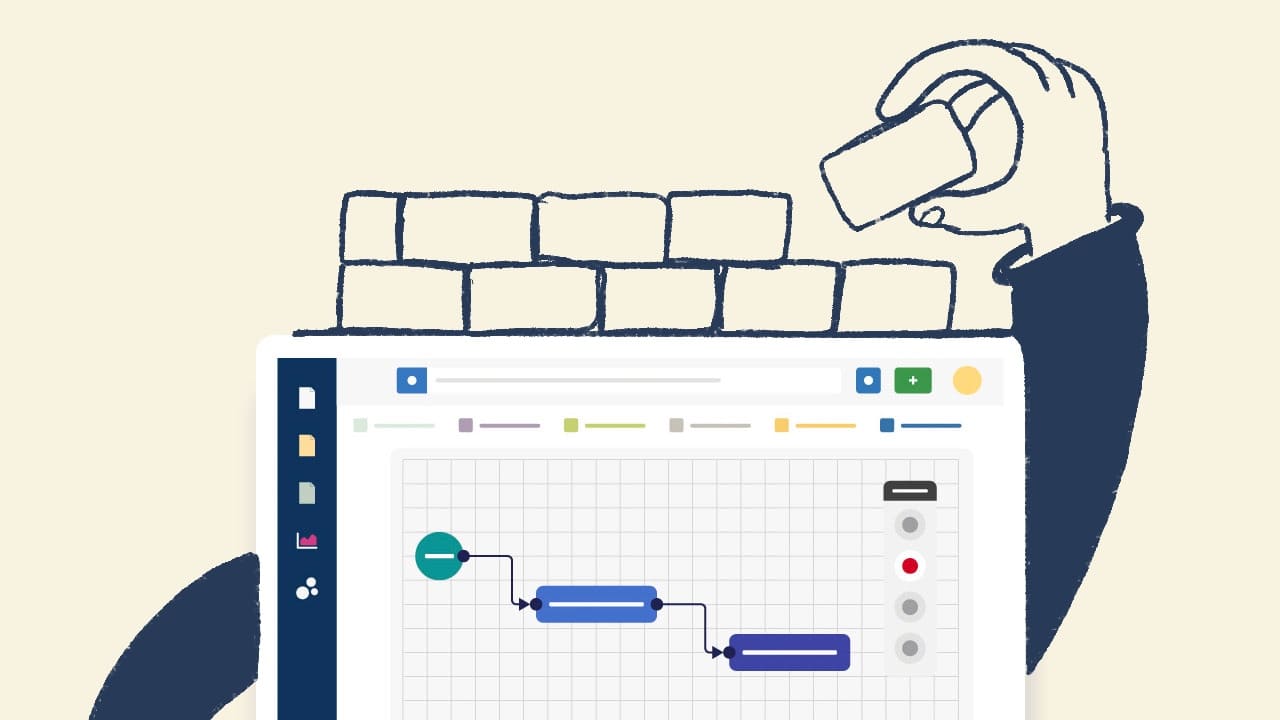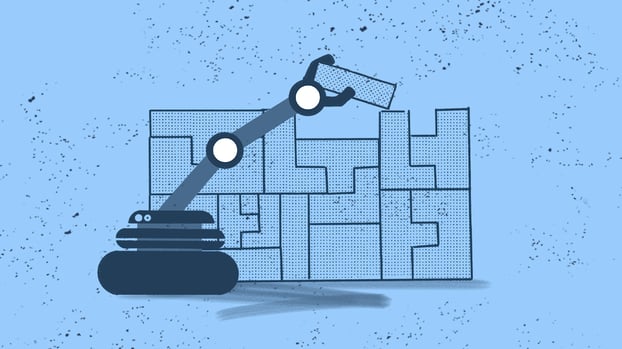When multiple incidents stem from the same issue, it's a clear signal that we need to take action using a robust, step-by-step Problem Management process.
The latest ITIL framework defines a problem as "the underlying cause or potential cause of one or more incidents." It also states that the primary goal of Problem Management is to minimize the likelihood and impact of incidents by identifying actual and potential causes and by managing workarounds and known errors such as software releases and changes to updates/patches, vendor products, user mistakes, or system failures.
But in order to handle this practice effectively, it is necessary to craft a solid process that allows you not only to resolve issues accordingly but also to detect potential issues before they arise.
In this article, we’ll explore what Problem Management implies and why you need to implement a structured guideline to handle incidents. We’ll also detail the necessary steps to build an ITIL process for handling problems and the best practices to implement a proactive support approach to prevent incidents before they start.
Ready to enhance your organization’s Problem Management? Let’s get into it!

Table of contents
- What does Problem Management entail?
- Why do you need a Problem Management process?
- Benefits of having an IT Problem Management process
- Challenges of a problem process flow
- 8 steps to build an ITIL Problem Management process
- Best practices to build a proactive Problem Management approach
What does Problem Management entail?
Problem Management involves identifying and resolving the underlying causes of recurring incidents. It follows a structured process that goes from the identification of a problem and progresses through analysis, also called problem control, to resolution.
There are three ways to categorize and resolve a problem once detected:
- The preferred approach is to resolve issues through error control, which involves fixing known errors using the corporate Change Management practice.
- When a problem cannot be resolved but a workaround is found, it is categorized as “a known error with a workaround.”
- The third scenario occurs when a problem is identified, but no fix or workaround is available. This situation is recorded as a "known problem."
Known errors and known problems must be logged in a Known Error Database (KEDB) and made available to all support teams, as Problem Management relies on skilled individuals who can effectively use techniques to identify the root causes of problems.
It is not a standalone capability but should integrate with other IT Service Management (ITSM) capabilities, such as Incident Management and Change Management. This set of practices must be reassessed to ensure continuous improvement.
Problem Management vs. Incident Management
It is essential to remember the differences between Problem Management and Incident Management, as they can cause confusion.
An incident is described in ITIL 4 as "an unexpected interruption to a service or a decrease in its quality." Therefore, Incident Management focuses on restoring regular service operations quickly after an incident occurs, aiming to minimize its impact on the organization and restore service to users. It is typically reactive and service-oriented.
Problem Management, on the other hand, addresses the root causes of those incidents in order to prevent and improve its resolution in the future, adopting a more proactive approach.
Why do you need a Problem Management process?

The IT department in an organization often deals with a stream of tasks, complaints, incidents, and problems that require attention. Without a structured process in place, these issues can pile up, resulting in a significant waste of time and resources on easily fixable problems.
So, establishing a Problem Management process is crucial for several reasons. Firstly, it helps identify and address the root causes of recurring incidents, which can significantly reduce downtime and minimize the impact on the business in the long run.
By proactively managing problems, organizations can prevent future incidents from occurring, leading to improved service reliability and customer satisfaction.
It also plays a pivotal role in identifying trends and patterns in incidents, which can be used to improve overall IT service quality and efficiency.
As Brian Skramstad said at Ticket Volume podcast: "Problem Management is not about solving issues with just a band-aid. We need to look for patterns and values in data so these problems don’t happen again.”
Benefits of having an IT Problem Management process
If you are still not convinced, here are some of the advantages of implementing an IT Problem Management process in your organization:
- Reduced downtime – By proactively addressing underlying issues, organizations can minimize the impact of incidents and reduce downtime. It can also help reduce future interruptions by preventing incidents beforehand.
- Improved service quality – Problem Management helps in identifying and addressing recurring issues, leading to improved service quality and productivity.
- Cost savings – By preventing incidents and improving service quality, organizations can reduce the costs associated with downtime and incident resolution.
- Continuous improvement – An efficient Problem Management process provides a mechanism for learning from incidents and improving IT services over time.
- Enhanced customer satisfaction – Approaching Problem Management from a holistic perspective improves customer satisfaction. A well-defined process is vital to ensure customer success.

Challenges of implementing a problem process flow
Of course, defining and implementing a unified and comprehensive guideline is not an easy task. Although it is totally worth it, applying a Problem Management process requires time, effort, and resources. Let’s take a look at the main challenges:
- Resource allocation – Implementing a Problem Management process requires dedicated resources, including staff and tools, which can be challenging for some organizations.
- Organizational resistance – Some organizations may resist implementing a Problem Management process due to a perceived increase in workload or change in existing processes.
- Integration with other processes – Problem Management needs to be integrated with other ITSM processes, such as Incident Management and Change Management, which can take some time to achieve.
- Unifying practices – When incidents are treated separately in silos, companies risk accumulating a backlog of unresolved issues, leading to problems being left unaddressed or overlooked by the appropriate teams.
8 steps to build an ITIL Problem Management process

ITIL Problem Management encompasses the entire problem lifecycle. Thus, the process flow involves managing problems reported as incidents by help desk agents or users through various channels, as well as potential problems detected proactively by an ITSM technology to prevent issues.
Once you've assembled your A-team, defined your main objectives, and prioritized the practice as a critical enterprise focus, follow this ITIL-aligned Problem Management workflow to establish an effective step-by-step process:
1. Problem identification
The initial step involves identifying a problem, which can occur either through a reported incident or through monitoring and analyzing IT systems. A problem is typically identified when the cause of one or more incidents reported to the help desk is unknown.
In some cases, it may be evident to the service desk that a reported incident is linked to an existing problem, that is a Known Problem, which means the incident can be associated with the existing problem record. However, if the problem has not been recorded, a problem record should be created promptly to ensure service performance.
2. Problem logging
The second step involves tracking and assessing known problems to ensure teams are organized and focused on the most relevant and valuable issues.
When a problem is logged, it must comprehend a complete historical record, so all problems must be logged with relevant details, including date/time, user information, description, related Configuration Item (CI), associated incidents, resolution details, and closure information.
3. Problem categorization and prioritization
Next, there are two critical stages that need to be addressed:
- Categorizing – After logging, problems must be categorized appropriately to assign, escalate, and monitor frequencies and trends.
- Prioritizing – Then, assigning priority is crucial in determining how and when the problem will be addressed based on its impact and urgency. The impact is evaluated by the number of associated incidents, indicating the number of affected users or its business impact, while urgency considers how quickly resolution is needed.
4. Workaround and escalation
After this, a workaround is a temporary solution for mitigating the impact of problems and preventing them from escalating into incidents.
While temporary fixes or workarounds can be provided to users experiencing related incidents, it's essential to record the problem in the KEDB and escalate it to seek a permanent resolution through Problem Management.
5. Problem investigation and diagnosis
In this step, the focus is on identifying the underlying causes of the problem and determining the most effective remedial actions. A thorough investigation into the root cause should be conducted, considering the impact, severity, and urgency of the problem.
Standard techniques include reviewing the KEDB for similar issues and resolutions, as well as recreating the failure to pinpoint the cause.
6. Problem resolution
After identifying the root cause of the problem, a solution is developed and implemented. The solution is then implemented using the standard change procedure and tested to confirm service recovery. If an average change is needed, an associated Request For Change (RFC) is raised and approved before applying the resolution to the problem.
7. Problem closure
After confirming that the error has been resolved, the problem and any associated incidents can be closed. The service desk technician should verify that the initial classification details are accurate for future reference and reporting.
Subsequently, the problem is closed in the Problem Management system, and all documentation is updated to reflect the resolution.
8. Problem review
Once the problem is closed, the Problem Management process undergoes a review to identify improvement opportunities and ensure that lessons learned are incorporated into future incidents.
This process flow should be iterative, with each step influencing the others, maintaining a continuous focus on enhancing the quality of IT services and minimizing the impact of problems.
4 best practices to implement a proactive Problem Management approach
Implementing a proactive Problem Management approach involves numerous practices that will help you align your business objectives with ITIL best practices:
- Continuous monitoring – Regularly monitor systems, applications, and infrastructure to identify potential problems before they cause incidents. Use monitoring tools to track help desk performance metrics and detect anomalies.
- Root cause analysis – Conduct thorough root cause analyses for all incidents to identify underlying issues. Use techniques like the "5 Whys" to delve deep into the root cause of problems and implement preventive measures.
- Knowledge Management – Maintain a knowledge base containing known errors, workarounds, and resolutions. Ensure that this knowledge is accessible to support teams to expedite incident resolution and prevent future occurrences.
- Change Management integration – Integrate Problem Management with Change Management to proactively address potential problems arising from changes. Review and analyze change records to identify trends and potential problems that may arise from planned changes.
By implementing these practices, organizations can anticipate and prevent problems, leading to improved service reliability and customer satisfaction.

Key takeaways
In conclusion, implementing a proactive Problem Management process is crucial for minimizing the impact of recurring incidents and improving service quality.
Key concepts include:
- Structured process: Implement a structured Problem Management process to identify, address, and prevent underlying IT issues.
- Integration: Integrate Problem Management with other ITSM processes like Incident and Change Management for a holistic approach.
- Continuous improvement: Regularly review and improve the Problem Management process to enhance its effectiveness.
- Proactive practices: Use practices like continuous monitoring, root cause analysis, and knowledge management to proactively manage problems and prevent future incidents.
Overall, Problem Management aims to improve service reliability, reduce downtime, and enhance customer satisfaction by addressing IT issues effectively. By implementing the ITIL Problem Management process flow, you’ll certainly find a more structured approach to effectively prevent and resolve problems.














.jpg?upsize=true&upscale=true&width=780&height=205&name=ITIL%20Foundation%20Exam%20(2).jpg)
